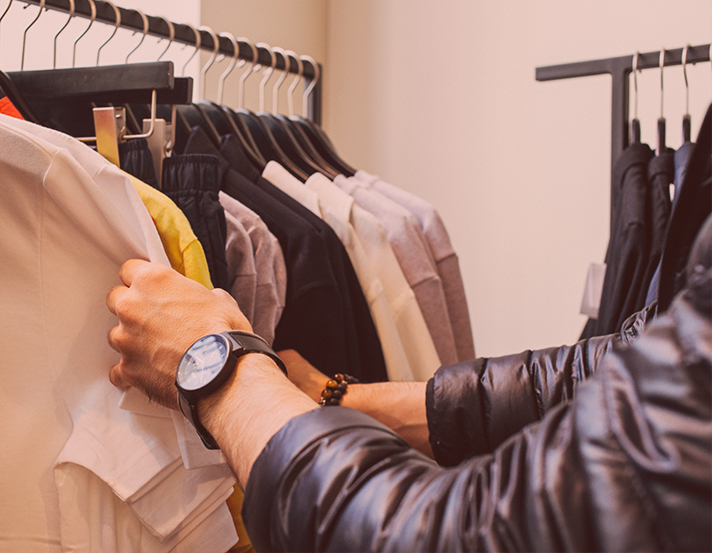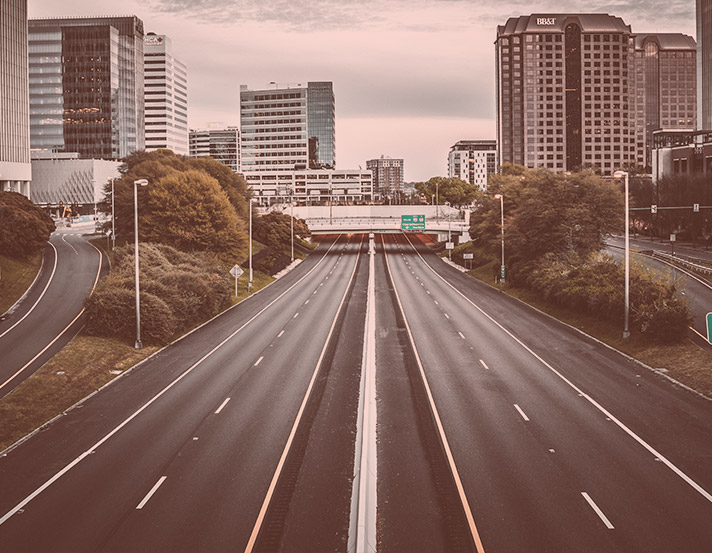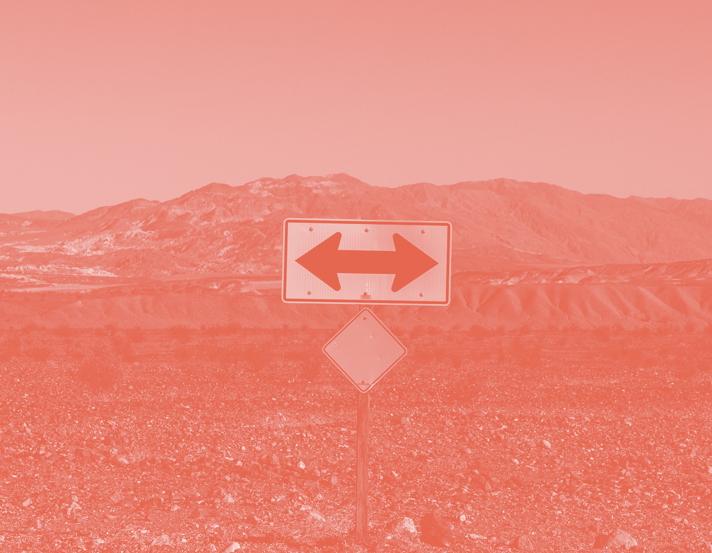Thoughts
The questions we often get from organisations that are looking at their bottom line closely and are wanting to adapt their brand or business strategy accordingly tend to lack specificity. Here are a few examples of what we often hear:
“How quickly can we reach more customers”
“How can we increase sales during a recession?”
“What are the best ways to market in a recession?”
“Can’t we just run some ads?”
Notice the common thread? For starters, none of these questions are specific to their business goals. Furthermore, they fail to address the needs and behaviours of their rapidly changing customers.
So if you’re interested in learning a few tangible ways to you can embrace clarity and cohesiveness online when times get tough, keep reading.
By incorporating the following elements into your business, we’re confident you’ll begin to see tangible results that we all desperately need in a competitive, rapidly evolving digital landscape that takes no prisoners.
1. Don’t Reinvent The Wheel
It’s natural to get sucked into something shiny and new and that promises to save the day. However, from our experience it always pays to start with evaluating and leveraging your existing technology assets whenever possible.
Why existing vs new? Well because it's often much more cost effective to squeeze the juice out of existing assets than onboard new technology. When it comes to looking for quick wins, this is a biggie that will help you maximise marketing ROI when budgets are thin.
In order to improve customer experiences, however, it now goes far beyond changing the colour of your website or updating a bit of website copy here and there.
A great win for anyone wanting to communicate with their audience more is to think about long form content. Yes, longer form in depth articles!
Time and time again we see businesses ramp up their communication on social media platforms only to reach burnout after a month or so.
Instead, if you take a step back to think about customer pain points and use your website blog to create long form content around the solutions you can offer, utilising various channels to amplify snippets of that content and linking back to the original website post is a surefire way to make the most of the opportunity.
When website blog copy is SEO optimised, it will build organic traffic that typically has higher conversion rates over other channels. Furthermore, Google will reward you for frequently updating your website, therefore bringing you higher up in the search results for keywords you may want to be ranking for, and are most relevant to your product or service.
2. Become More Data-Driven
When it comes to cost-effectively optimising your product or service based on customer preferences, using data to better understand your audience preferences, behaviours and pain points is a great place to start.
In essence, data-driven decision making means relying on factual information to identify patterns, draw inferences, and gain insights that guide your decision-making process.
This approach helps eliminate bias and emotion from your decisions, ensuring that your company's goals and strategies are grounded in evidence, often mirroring customer preferences and behaviours in the form of data-driven patterns rather than personal preferences or subjective opinions.
There are plenty of digital tools out there now that include metrics in them, which will be essential once you have your key performance indicators (kpis) clearly identified, stemming from your business wider business strategy.
Ultimately, by basing decisions on facts, you can feel confident that your choices are grounded in data and aimed at maximising business impact.
Rather than leaving it up to gut feel, or even worse, assigning it someone else in the business that hasn’t been given the tools, or has a limited skill set to make an informed decision.
What metrics should I track to measure the effectiveness of my online customer acquisition efforts?
Here are a few key metrics to start tracking if you aren’t already:
-
Website Traffic: Monitor the number of visitors to your website.
-
Conversion Rate: Measure the percentage of visitors who take the desired action.
-
Customer Acquisition Cost (CAC): Calculate the cost of acquiring a new customer.
-
Return on Investment (ROI): Assess the profitability of your marketing efforts.
-
Engagement Rates: Track engagement on your social media and content marketing efforts.
3. Focus On User Experience
Enhancing User Experience (UX) is crucial for retaining and converting visitors. We come across countless websites that have been beautifully designed, yet lack a consistent structure around navigation, usability and content that is essential for optimal website performance.
If your web page lacks certain UX/UI design principles, visitors may become frustrated and leave your site quickly, increasing your bounce rate and decreasing click through rates. Additionally, search engines may penalise your site in rankings if users consistently have negative experiences, leading to decreased organic traffic.
These days mobile devices are responsible for over 50% of search traffic. Poor navigation across desktop and mobile can also result in a lower user satisfaction, reducing the likelihood of repeat visits and unknowingly diminish your brand’s reputation.
Ultimately, a hard-to-navigate website can significantly impact your business’s overall success and growth and in order to combat this, start by understanding and focusing on intuitive design principles that guide users effortlessly through your site.
Conduct regular usability testing to identify and fix pain points, ensuring that every element of your website contributes to a seamless user journey.
A well-optimised user experience not only improves customer satisfaction but also boosts your website’s search engine rankings, driving more organic traffic and positive rankings as a result.
4. Eliminate Technical Issues
A technically sound website is the backbone of a successful online presence.
Technical website issues can arise from a variety of sources, including poor coding practices, outdated software, server misconfigurations and inadequate testing. These issues can develop over time as websites grow and evolve without regular maintenance and updates.
As a result, we’d recommend that you revisit the technical integrity of your website monthly or quarterly depending on the size.
Technical issues such as slow loading times and broken links can frustrate users, leading to higher bounce rates and a decrease in user engagement.
However, there are also plenty of technical issues quietly doing your brand a disservice underneath the hood that go unnoticed, such as missing SSL certificates, incorrect title tags, JavaScript errors, metadata problems, broken links and unoptimised images to name a few. These can degrade the overall value of your website significantly from a search engine POV since overall website performance is a factor with regard to rankings.
For both obvious and harder to detect issues, we use SEO software to help identify and resolve them as part of regular website maintenance, ensuring your website remains technically sound and user-friendly for optimal performance and ROI.
Implementing these technical best practices not only enhances user experience but also boosts your search engine rankings, making it easier for new customers to find you.
5. Create Consistent , SEO-Optimised Content
Creating consistent, search engine optimised (SEO) content that when implemented on a healthy website platform will directly improve your brand's visibility and conversion metrics.
However, like anything of real value these days, it doesn’t happen overnight. Unlike paid advertising with Facebook or Google Ad where you can us a keyword research tool and pay for the privilege to instantly show up for a chosen set of keywords if you’re willing to pay the price to outbid your competition, investing in creating various types of content from within takes time. Furthermore, once you embark on a content creation journey it can take even more time for search engines to index new pieces of content, landing pages, etc. to build authority and trust with both search engines and users.
If you’re able to stick at it however, the upside can be far greater than paid advertising, or any other form of marketing for that matter. Not only can you post as much content on your website as you want for free, unlike paid advertising, creating SEO-optimised blog copy for example builds sustainable organic traffic growth over time without any ongoing costs. Instead, you’ll get rewarded with traffic ongoing for the lifespan of any given post, which will largely depend on how relevant it is.
If you’re interested in starting to build authority brick by brick with content creation, we’d suggest firstly conducting keyword research to understand what your target audience is searching for, and then integrating these keywords naturally into your content.
It’s important to constantly validate your content against user pain points, ensuring that it is valuable, engaging, and relevant to your audience’s needs. Consistency is also crucial. Establish a content calendar to maintain a regular posting schedule if you want to see results manifested into reality.
To summarise, by optimising your content for search engines and keeping it aligned with user intent, you can enhance your site’s authority, drive more organic traffic, and ultimately increase conversions.
If you’re interested in how the 5 above recommendations can work together to solve your current pain points online, we’re always here to help.
Our product Dream Discovery was born out of pandemic, and designed as the great reset required to help our clients’ digitally transform their organisations in a time when clarity and cohesiveness was paramount to meet shifting market behaviours and demand during uncertain times.
In the tourism sector for example, while the business community have experienced devastating effects from COVID-19, the pandemic also created a unique opportunity to rethink the visitor sector’s purpose, the principles by which they operate and how they measure success.
Our long term collaboration with Lake Wanaka Tourism stems from their own response to a rapidly changing sector being led by visitors behaviours and community/environmental needs alike - Regenerative Tourism by 2030.
Dream Discovery was our starting point for identifying key opportunities for improvement within specific areas of their digital landscape, some of which were working better than others. Ultimately, our goal was to identify these opportunities and extract key projects within them that would unlock a more cohesive and desired user experience for their visitor audience, educating and inspiring change with regenerative tourism serving as the catalyst for change along the way.
Developing a roadmap that helped strengthen and maximise their marketing efficiency and ROI in a critical time of flux resulted in a notable increase in their digital engagement and overall brand growth.
Check out the case study for more insight into what those steps looked like, and how Dream Growth might just be exactly what you need in a time like these.
For further reading on digital strategy and transformation, check out our other blog posts:


























